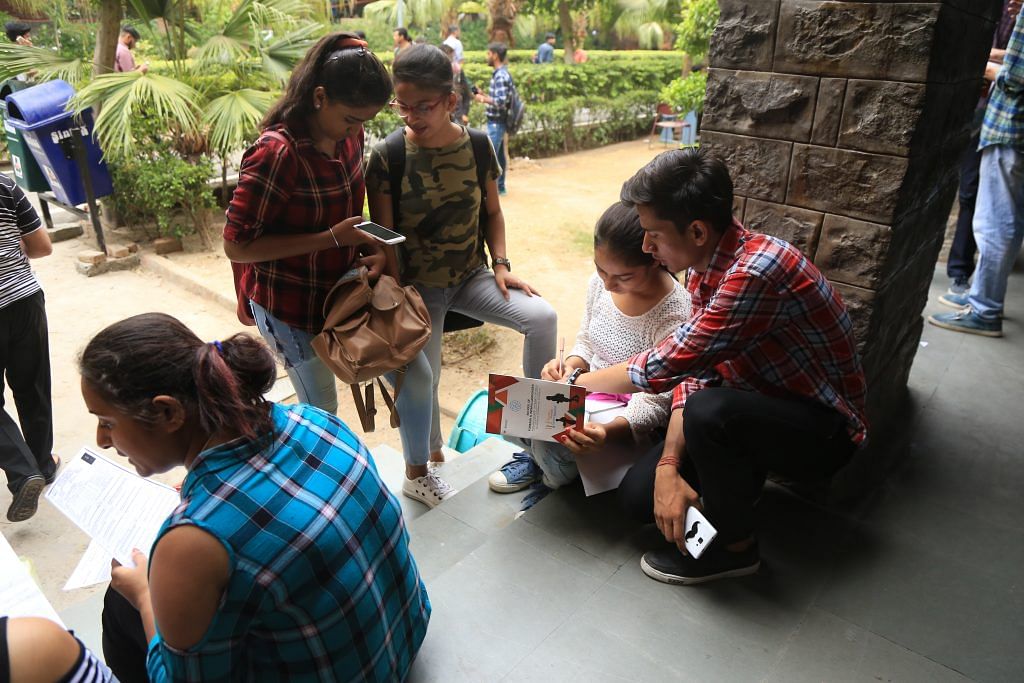Canada and Australia have gained the most as US falls from grace. The UK, despite the new forbidding visa rules, remains an option for Indian students.
New Delhi: The US is no longer the country of choice for Indian students. Canada and Australia are among the new preferred options, possibly because of the tough immigration visa policy followed by the Donald Trump administration. The UK still remains a favourite, but its own rules have prevented it from gaining popularity, suggest the numbers.
In the last few years, these countries, along with Australia, have remained the preferred destinations for Indian students not just because of their education quality but also due to the job opportunities and the standard of living they promise.
According to the ministry of external affairs, as of August 2017, a total of 5,53,440 Indian students were studying in countries abroad.
In 2015, 77,375 Indian students went to the US on student visas, known as F1 visa, according to the US State Department. That number, however, dropped by 12,118 in 2016, the year Donald Trump came to the White House. In 2017, the State Department issued 17% less visas as compared to 2016. Its move came despite the fact that countries like Canada and Australia are welcoming students with favourable visa programmes.
A government of Canada report said 83,740 Indian students were granted a student permit in 2017 as compared to 52,745 in 2016 — a jump of 30,995 students.
At the same time, the number of Indian students in Australian graduation programmes increased to 30,187 in 2017 from 25,118 in 2016.
US
The number of students travelling to the US was on a steady rise till 2015. However, there was sharp drop in 2016, which coincided with President Trump’s election. Some blame his anti-immigration campaigns pre-election for discouraging students.
Between October 2016 to September 2017, the State Department issued 393,573 F-1 visas, a Washington Post report said, adding that there was a 17% decline from the previous fiscal and nearly 40% below the 2015 peak. The drop-off was particularly dramatic among Indian students, with a 28% decline in visas in 2017 from the second-biggest feeder of foreign students at US colleges.
The reason for this decline cannot be pinned on just the State Department. Other factors, including a falling exchange rate of the Indian rupee as well as higher fees in foreign universities, have played a part too.
The recent socio-political climate in the US also convinced many aspiring students to shift to destinations like the UK and Australia.
The US Embassy spokesperson said, “The United States strongly supports educational exchanges, as they benefit both of our countries and increase our people-to-people ties. More than one million international students study in the United States each year.”
United Kingdom
The recent kick in the teeth for India came when UK relaxed the regulations for its student visas, or Tier 4 visas, and did not include India.
India is still in the list of ‘high risk countries’ while Bahrain, Serbia and China enjoy relaxed student visa rules. The decision incited outraged reactions from the Indian community in UK.
Britain’s exit from the European Union (Brexit) and the state protectionist policies were primary reasons for the stagnant number of applications by Indian students for British universities.
Despite these issues, the academic year 2017-18 has seen a 30% hike in number of Indian students choosing UK as their next destination. The familiarity in the 10+2+3 pattern of education makes UK a helpful choice.
Canada
The number of Indian students going to Canada has been on a steady rise in the last five years. In 2017, the number of Indian students in Canada increased by 39% over the previous year.
The North American country updated its immigration policy in June this year, reducing visa processing time for Indian students from 60 to 45 days. Its new ‘Student Direct Stream’ programme, which makes the applications valid in all institutions, is now available to Asian students applying for college courses. This programme improves the previously prevalent ‘Student Partners Program’ where students could get quick visa approval only in certain institutions.
With the rise in protectionist policies of US and UK, an increasing number of Indians are now seeking Canada as an option. Its new immigration policy is expected to push more Indian students to apply.
Australia
The second most popular destination for Indian students after US, the diaspora is on a rise in Australia due to the large number of students settling there.
However, the recent change in the Australian visa policy for skilled migrants could affect the number of Indian students looking to settle there. Australia has also increased the prices of visa applications, along with which the process to obtain visas for skilled migrants will become rigorous.
The effect it may have on the number of student applications is yet to be seen.
Despite all this, Australian universities are still very welcoming of Indian students with the number of visas granted spiking to 30,187 in 2017 —a 17% rise over 2016 numbers.
